“You have learned from the news media and City officials that there has been a widespread airborne anthrax release across the city that may affect large numbers of the City’s residents. [Anthrax exposure may cause fever, coughing, malaise, fatigue, myalgias, profound sweats, and chest discomfort. If anthrax is inhaled and not treated, death is very likely for the victim. However, antibiotics can protect against the deadly effects of anthrax exposure, particularly if they are taken as quickly as possible.]
You have been informed by the news media and City officials that the New York City Department of Health and Mental Hygiene (DOHMH) is opening Points of Dispensing (PODs) across the City to rapidly distribute antibiotics to the public…You have been informed that “your” POD at Marte Valle (School) will open in approximately 12 hours, and that to receive medication, each individual will be required to complete a POD Screening Form. [In an actual response, the opening time of the PODs will likely vary, and "your" POD would be located in your neighborhood.]
You have been informed that the Screening Form is available both electronically (that you may fill out on your computer and print out; or print from your computer and fill out by hand), or as printed forms available at various outlets (including the POD itself) which may be filled out by hand before coming to the POD. You have been encouraged to fill out the forms electronically whenever possible and to help others do the same, as it will speed progress through the POD.
You have been informed that a designated adult may pick up medications for themselves and up to 5 other individuals if they bring completed POD Screening Forms for each person to the POD site. You have been encouraged to pick up medications for individuals that may experience difficulties in accessing PODs due to mobility, age, transportation or other constraints…”
This was the role written for 300 or so New Yorkers (including myself) who played “patient actors” at a City of New York Point of Dispensing (POD) drill held at a school on Manhattan’s Lower East Side Saturday afternoon.
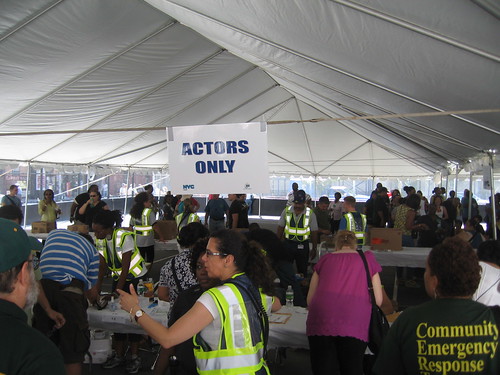
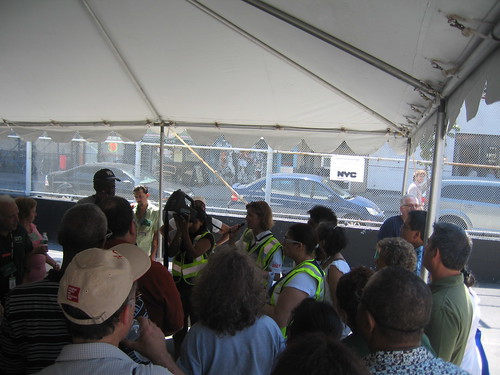
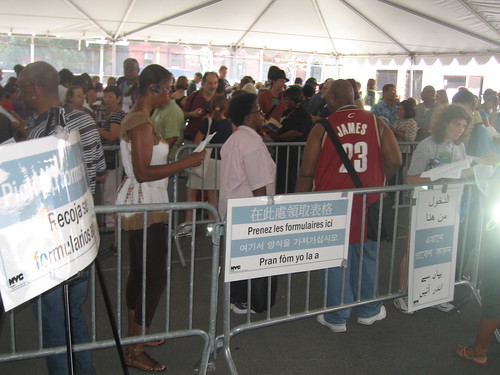
A HEALTH DEPARTMENT OFFICIAL BRIEFS US BEFORE WE LINE UP FOR ANTIBIOTICS.
DOHMH staffers also distributed a survey to find out how we as individuals would handle a medicine distribution in a real-life situation (ie. Would you be picking up doses for others? How would you get to the POD?), which I imagine will provide complementary data to the Department.
As the exercise was being set up inside the school, we ended up having to wait more than an hour on line (giving new meaning to the term “patient actors”!). However, the organizers did their best to help us deal with the summer heat by frequently bringing around refreshments and snacks as well as keeping us under the tent. And, most of us knew from experience that waiting is an expected part of the drill in these drills. The time did offer us a chance to catch up with fellow CERT team members (I was with my teammate, Will Sanchez, with whom I had also spent time waiting for an emergency exercise to start underneath the Hudson River in a train tunnel this Spring) as well as to meet some new folks, including members of the Coast Guard Reserve, the Coney Island CERT and a DOHMH staffer/volunteer on a ‘busman’s holiday’.
Once the drill began, the “patients” started filing into the school building and were led to the gym.
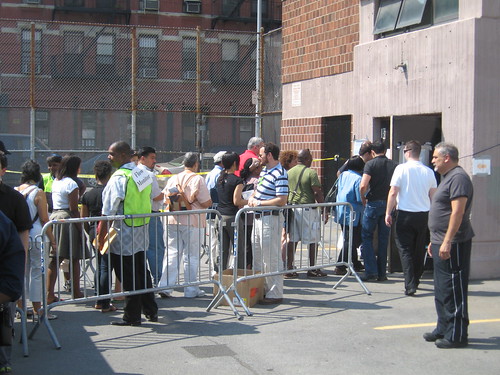
THE DRILL STARTS Â AND “PATIENTS ” STREAM INTO SCHOOL/POD.
Rows of tables were set up with staffers waiting to look at our forms, correct our mistakes (I had checked all the circles not filled them out ‘SAT’-style as requested) and direct us to the next step. If you had indicated on your form you had any potential problems with the antibiotics being distributed, you were sent to the Medical Evaluation table to determine whether you needed an alternate antibiotic. Otherwise, you were directed to a medicine distribution table.
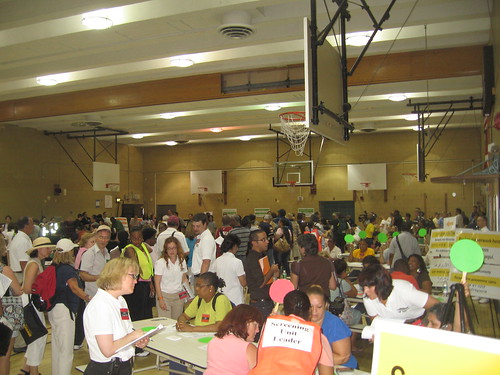
INSIDE THE GYM/POD
At the medicine distribution table, we were given a container with the antibiotics as well as the directions on how and when to use them. Once finished, we were guided back outside. It took about 10/15 minutes to finish the whole process in the gym. In addition to those working on the drill, there were also a number of “observers” in the gym monitoring the event from relevant government agencies. This NY1 television report video offers a good sense of the activity inside.
A POD WORKER GOES THROUGH MY SCREENING FORM BEFORE PROVIDING ME WITH ANTIBIOTICS; THE WORKER WROTE MY INITIALS ON THE CASE.
We were asked to go through the process again so DOHMH could get more practice. (In fact, we were all requested to do three trips through.) Officials told us that in an actual emergency the City would likely set up 200 or so of these PODs to distribute medicine.
As a “patient actor”, you go through the drill watching all the activity around you without knowing exactly who is doing what. And. therefore it is impossible from our vantage point to have any idea of the successes or failures of the drill. So earlier today, I checked with DOHMH to get its initial evaluation. A Department spokesperson sent me this helpful response by email this afternoon:
“This exercise allowed DOHMH to test our plans set up a POD and to distribute medication to large numbers of New Yorkers in a very short period of time. It also highlighted, as all good exercises do, successes and areas for improvement. The new screening form, which was being tested for the first time, was very successful and therefore we need to address the pressure this high throughput placed on other aspects of the POD. We plan to also consider options for making mental health staff more identifiable within the POD and designate quiet areas within the building where individuals can be spoken with. We also plan to consider adding more staff to assist the trained POD core team with setting up the POD.”
I also asked for an evaluation of the role of the volunteers: “The citizen patient actors were great. It is very helpful to have the public engaged in these exercises as it serves as a way to educate as well as an opportunity for DOHMH to receive feedback on our plans.” The two-way value of these exercises — not only as practice for the responders but also as education for the citizens involved — is instructive. It is why I (and many emergency officials I have spoken to) believe that as a nation we should be increasing the number of emergency drilling opportunities for the public.
Like all of the CERT drilling activities, participating in the POD exercises was interesting and largely enjoyable. No SAG/AFTRA cards were distributed afterwards and our next acting jobs will still be limited to emergency drills. However, at the beginning of the day, a DOHMH official told us: “Thanks for participating and making New York City a happier and safer place.” To most of the volunteers, that type of recognition and satisfaction is compensation enough.

THIS “ACTOR” STUDYING HIS ROLE

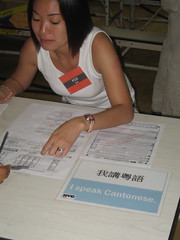
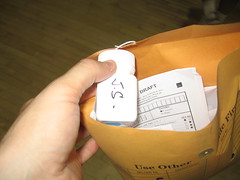



1 response so far ↓
1 DutchR // Aug 18, 2009 at 8:26 am
This is a test, just a test…
and thanks to citizen volunteers in NYC it looks like the plan went off well.
I pray that we never have to use these plans but I plan like they will be necessary tomorrow.
Vigilance is the best defensive posture.
DutchR
Leave a Comment